How 200+ Women Across 21 States Built 400+ Toilets in Half the Usual Time!
“We do not just build toilets. We teach the women to build and maintain their own toilets. So that, after they master these construction skills, they can earn a living from it by building toilets for others." #WorldToiletDay #Sanitation #ImpactThatMatters
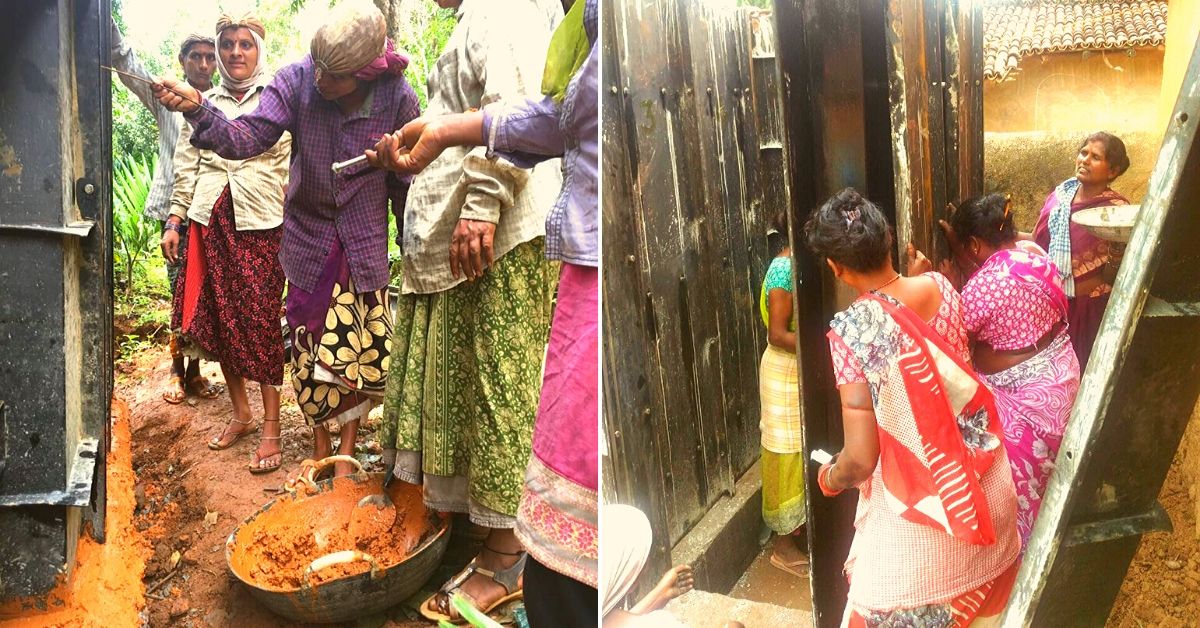
According to UNICEF, the highest number of people in the world (around 620 million) who practice open defecation, reside in India. And the hazards of open defecation and poor sanitation facilities are numerous. Disease, poor hygiene, lack of privacy and women at increased risk of sexual assault, to name a few.
Coming in with a solution which helps build a toilet in half the time it usually takes, are the engineers at AMMACHI Labs. The research centre at Amrita University (Kerala) has developed a new mould-based technique for toilet construction that makes constructing them easy, efficient and economically viable.
Developed by using 3D modelling, the key benefits of using this technique include reduction in time and cost for constructing toilets in remote rural settings. A semi-skilled group of four women can construct one unit in approximately 40 hours instead of the conventional 76 hours—cutting the total time by nearly half.
Moreover, they train rural women to construct these toilets. Thus far, they have trained more than 200 women to build these toilets across eight states. Innovations like these are crucial in developing scalable solutions to end open defecation.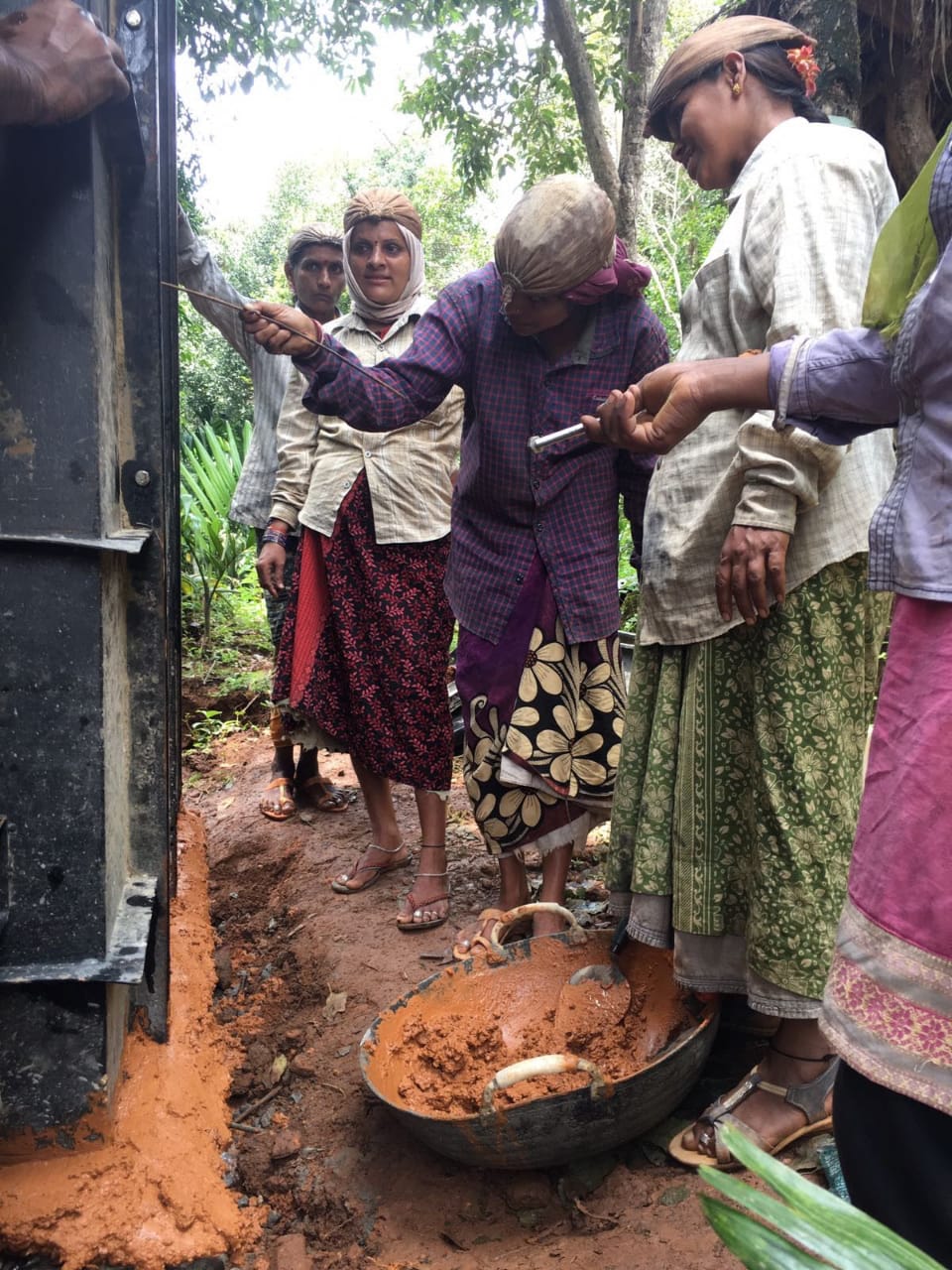
The Innovation
“We do not just build toilets,” says AMMACHI Labs Director Dr. Bhavani Rao, speaking to The Better India. “The empowerment model we adopt for sanitation is that we teach the women to build and maintain their own toilets. After they master these construction skills, they can earn a living from it by building toilets for others in the village. It’s a win-win solution.”
In 2015, they made a sample mould-based toilet in the University and tested it for a year. After quality control checks, they rolled it out in the field across eight states—Tamil Nadu, Karnataka, Haryana, Punjab, Jammu, Himachal Pradesh, Jharkhand, Odisha.
Thus far, more than 400 such toilets have been built across 21 states.
How do they build toilets utilising your new mould-based technique?
“It’s a modular system with each piece numbered. The women assemble each piece by following and aligning the pieces, besides fixing the unit with nuts and bolts. There are only two sets of moulds — one for the foundation, and the other is the walls of the stall. There are a lot of benefits to this technique,” says S Harish Mohan, a mechanical design engineer with AMMACHI Labs, speaking to TBI.
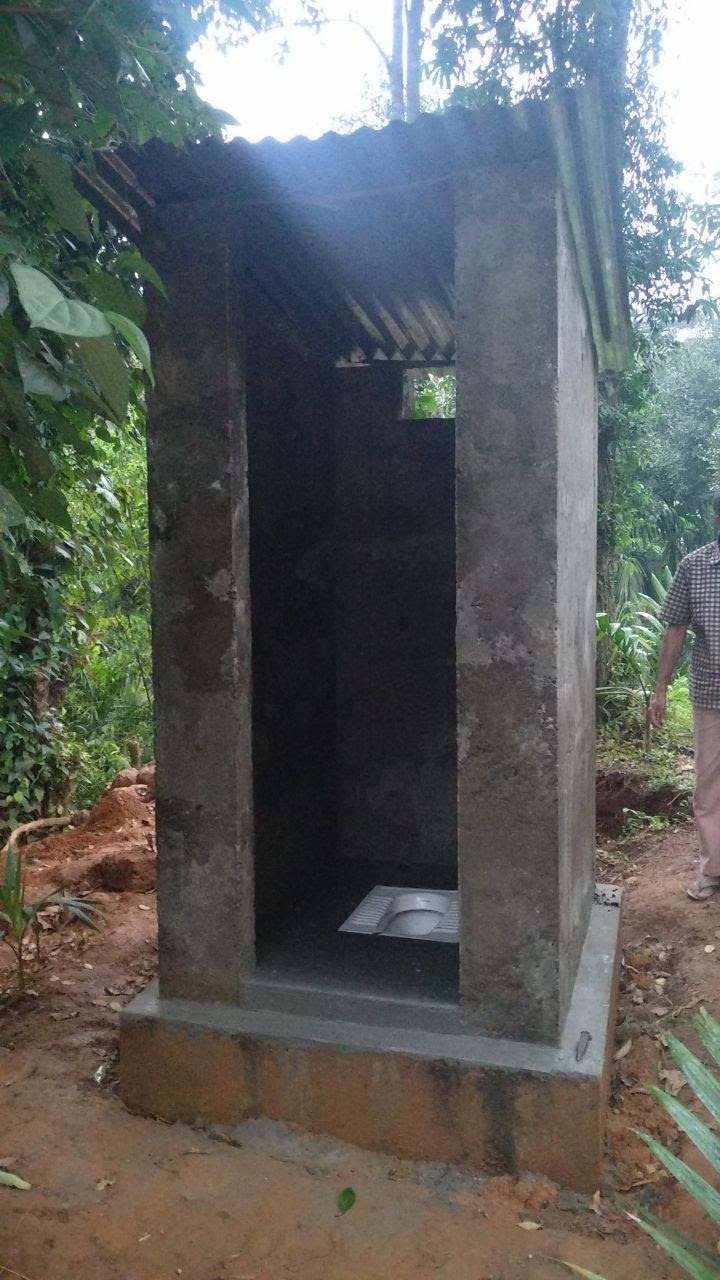
Firstly, it needs less skill to make the toilet as it does not require to train masons to lay bricks or plaster them. The model for the toilet has been dubbed MTF Model, which translates into ‘Monday-Tuesday Finished’, and there are options to lay the hinges inside the stall. Furthermore, women don’t need to read instructions. They can follow an easy to learn video which shows the whole process of assembly and building and maintenance.
While the estimated cost of the mould is approximately Rs 55,000, the unit cost of building a toilet is anywhere between Rs 11,500 and Rs 14,000, compared to the conventional Rs 18,000-Rs 22,000.
Using mild steel for rural applications ensures long life in addition to cement, aggregate (gravel, crushed stone, etc) and sand. For the mould, they use waste motor-oil or cooking oil to grease the panels so that they easily come apart.
“The rural sector needs a concrete structure, so we went with this design. For the mould, we adopted a design which can be manufactured in sheet metal shops in rural areas. The design uses mild steel sheet for manufacturing. Once the concrete inside the mould is solidified, the mould can be unassembled and can be used to make another,” says Mohan.
The mould can be assembled in less than an hour and unassembled in the same fashion. Installation of the mould needs skills like checking the vertical and horizontal levels. Makers have to ensure the available gap in between the outer and inner mould is equal. Wall construction concrete mixture is used in the proportion of 1:3:5 of cement: sand: aggregate. The team conducted compressive strength test in the structural testing lab for which the results were positive.
AMMACHI Labs and other initiatives
AMMACHI Labs does not just build toilets. Through community mobilisation, capacity building, skill development, sustainability maintenance for a community-led total sanitation approach and utilising innovative e-Learning methods such as the tablet based Rural Toilet Builder (RBT) course, they empower rural women to build their own toilets. The RBT course uses videos in different local languages like Kannada and Odia, alongside 3D animations, to teach locals everything from site selection to maintenance.
One such beneficiary of their efforts is Renuka Nayak of Gupatapada village, which is located around 40 kilometers from Bhubaneswar. She was the first women mason involved in the making of the toilets under the AMMACHI Labs initiative.
“I feel so accomplished to have learned all these skills through the computer. We women are learn quick learners. In addition to housework, we also learn these skills and can do so much. Women have more attention to detail than men, and can do very precise work if given the opportunity,” she says.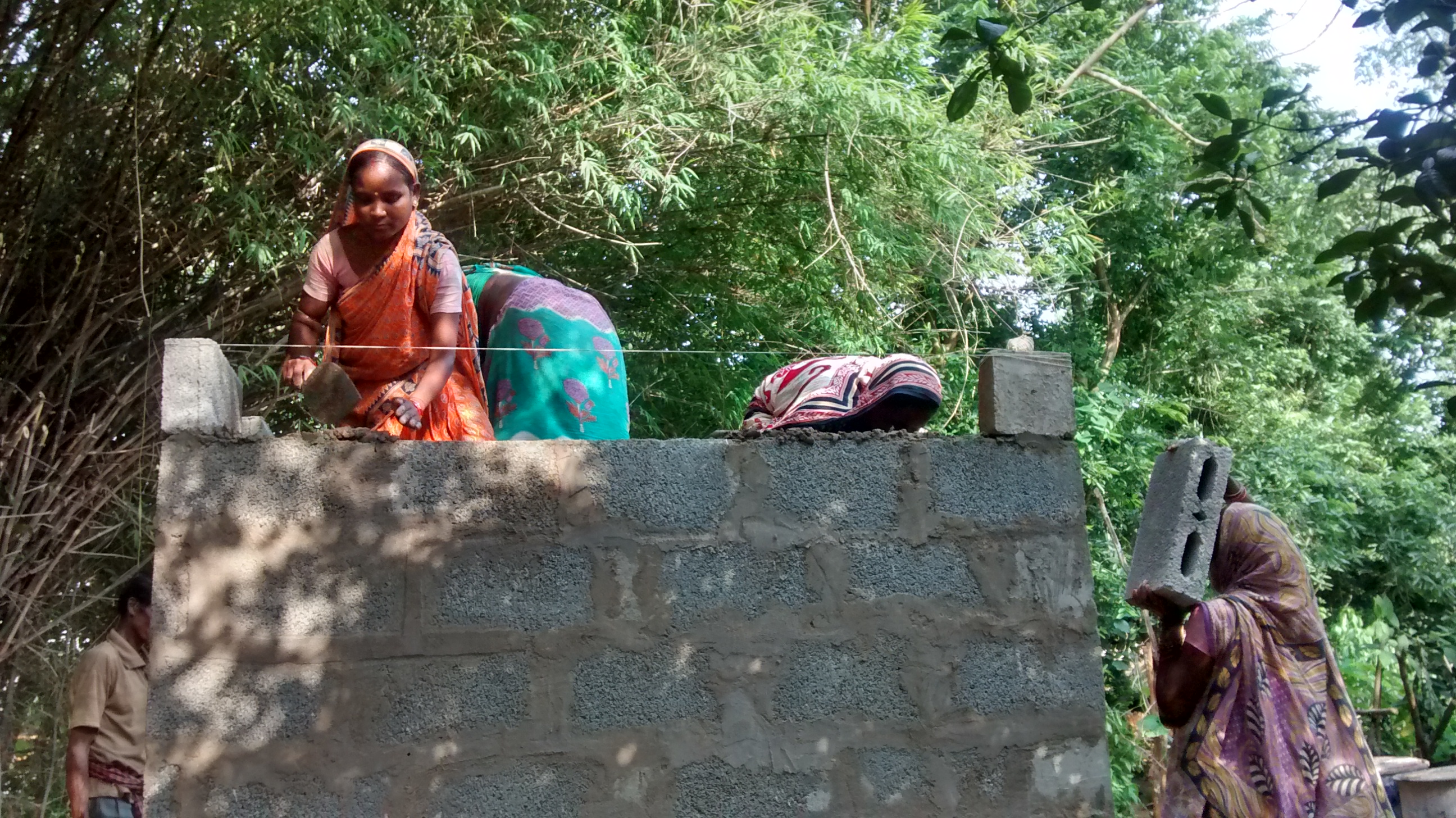
For the time being, the project is self-funded. The objective now is to empower at least 5,000 women in rural Indian communities to champion sanitation and community development, eventually reaching their entire village, or 30,000 indirect beneficiaries.
“Participating women will receive continuous life skill training, while we will continue to conduct sanitation campaigns, organise and mobilise efforts to implement key community actions to access government programs, such as the Swachh Bharat Mission that specifically promotes sanitation,” shares Mohan.
This community mobilisation and training effort is designed to efficiently reach entire communities in a short amount of time. It will also provide strength and support to the women advocating and petitioning to their local governments to address social and environmental issues in their villages.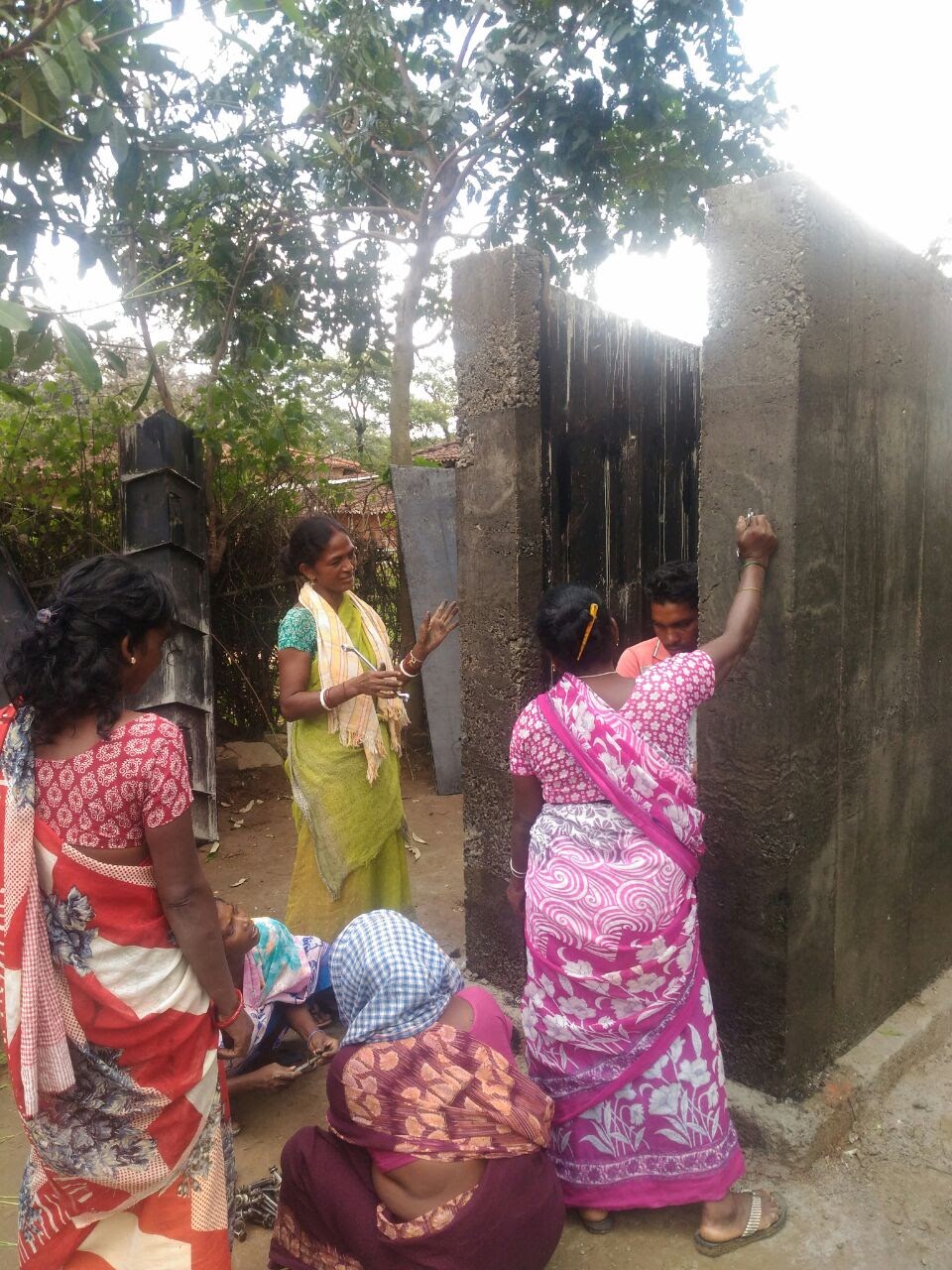
“Moreover, it is in line with the Government of India’s commitment to improving sanitation and rural development, as well as the United Nations’ Sustainable Development Goals (SDGs),” adds Mohan, while discussing his team’s future goals.
Empowering these women to build their own toilets is one method that not only addresses concerns about lack of toilets, but also helps them take ownership of these structures, maintain hygiene and take care of their health.
Also Read: Gun, Gods & Fines: How IAS Officers Ensured Everyone in Gwalior Dist. Has a Toilet!
Picture Courtesy: AMMACHI Labs
(Edited by Saiqua Sultan)
Like this story? Or have something to share? Write to us: [email protected], or connect with us on Facebook and Twitter.
This story made me
- 97
- 121
- 89
- 167
Tell Us More
We bring stories straight from the heart of India, to inspire millions and create a wave of impact. Our positive movement is growing bigger everyday, and we would love for you to join it.
Please contribute whatever you can, every little penny helps our team in bringing you more stories that support dreams and spread hope.



















